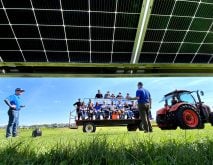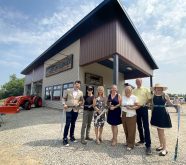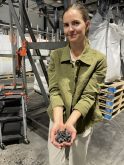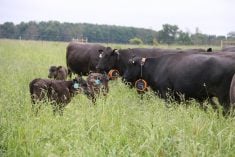The Canadian Senate is getting into the nitty gritty of Canadian soil health as a long-term study reaches the mid-point for witness testimonials.
“It’s one of Canada’s most precious natural resources. Soil conservation is a top-of-mind matter for all of us in the agriculture and agri-food sector,” Senator Rob Black told the Christian Farmers Federation of Ontario at a recent meeting.
“The future of this country is intrinsically linked to the health of its ecosystem, which itself hinges on soil health.”
Read Also

New Iridium technology helps block GPS spoofing
A tiny new chip will allow Iridium’s Positioning, Navigation and Timing (PNT) signals to be received much smaller devices, create a backstop against Global Positioning Systems (GPS) spoofing.
Why it matters: Senators from the Standing Committee on Agriculture and Forestry are travelling across Canada and internationally to gather information for an updated soil study.
Black, chair of the Standing Committee on Agriculture and Forestry, is leading a new soil study, which will be an update to Senator Herb Sparrow’s 1984 soil report, Soil at Risk: Canada’s Eroding Future.
The 1984 report was directed at farmers, agricultural organizations and government, said Black, but the current study aims to connect all Canadians to soil health.
While Sparrow’s report is the most requested senate report in 157 years, it no longer reflects soil health technology and research needs, including sector feedback around data sharing or the lack thereof, said Black.
“We need some clearinghouse for soil health data. What happens in Ontario isn’t necessarily being shared elsewhere across the country.”
Black foresees that senate committee analysts will assess the project work plan and identify any gaps by this fall. The witness portion, which includes 92 witnesses over 24 meetings to date, will wrap by Christmas.
“That does not include the testimony from any of the experts we’ve heard on our fact-finding missions or the documentation that’s been sent in for us to consider as well in this report,” he said.
Ideally, it will reflect the wide variety of soil across the nation and the need to protect agricultural land as part of sustainability, he added.
“We need, at the federal level, to be always thinking about the sustainability of agriculture, and we can’t do that if, as organizations in the province say, we’re losing 319 acres a day. There’ll come a time when we can’t do that.”
History shows soil health is essential for social, economic and political stability. While land planning is a provincial matter, said Black, drawing connections to soil health might spur federal recommendations that reflect land use and protection protocols.
Monetizing soil carbon sequestration as a tool to mitigate global climate change could be implemented at a relatively low cost per tonne of CO2 equivalent, he explained, with co-benefits such as increased fertility, cleaner water and greater farm product profitability and productivity.
Black said he is impressed with committee members’ questions because “they’re digging deeper for more understanding,” including the food insecurity issue he and Senator Sharon Burey have raised repeatedly in the Senate.
Burey, an Ontario pediatrician, often speaks of the connection between soil health and food security, which could lead to a separate inquiry, suggested Black.
A United Nations Food and Agriculture Organization 2015 report said soils are deteriorating due to erosion, nutrient depletion and loss of organic carbon, biodiversity, and other issues.
“I heard someone here in Ontario say if we don’t do something, there will be no soil that we can use (by 2075),” Black said. “Enhanced and updated regulatory guidelines would benefit users of Canadian soils and ensure the health of the surrounding ecosystems remains strong.”
Additionally, soil contamination via chemical oil spills, salt, excessive pesticide use, acid rain, polluted water, and the transportation, relocation and use of contaminated soils in built-up areas is a rising concern, particularly in Wellington County, said Black.
In mid-July, senators attended the International Soil Plenary Conference in Rome, where global experts shared experiences, ideas and insight on conservation, restoration and the protection of soils.
Black said by exploring the good, bad, and ugly of global soil health, Canada could initiate regionally effective management protocols without reinventing the wheel.
In August, fact-finding tours planned to Alberta and Saskatchewan will expose senators to broader-scale farms, and they’ll also investigate soil health under canopies.
“Studies have shown that agroforestry has the ability to enrich soil carbon, organic carbon better than mono-cropping systems,” Black said.
Improving soil health across the nation’s varied landscape will not come with a one-size fits all solution but the study recognizes the critical role soil plays in communities, environment and society, he said.
“We need to feed Canada and the world, and we’re not going to be able to do that if we don’t have the soil health and the capacity to do that.”















